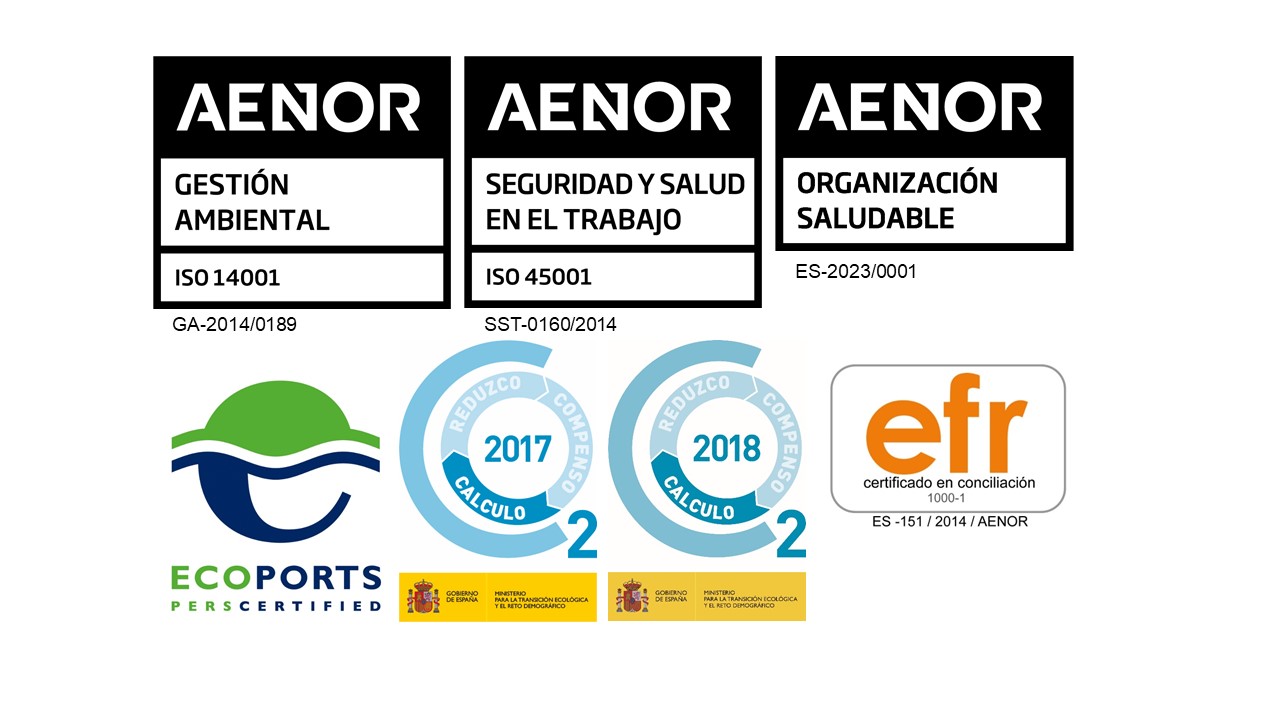Processing of Dangerous Goods
SALVIA
Goods included in the International Maritime Dangerous Goods (IMDG) are mostly essential products for industry and modern life. These include, for instance, fertilisers, plant protection products, medical gases, paints, bleaches, etc.
The term dangerous goods also includes any empty packaging, unwashed, which has previously contained goods classified as dangerous, unless it is demonstrated that all residues of such goods have been removed from the packaging and boiler blowdown, to cancel out any risk, or filled with a non-hazardous substance.
Dangerous goods are classified according to their risks into nine classes: explosives; gases; flammable liquids; flammable solids; oxidizing substances and organic peroxides; toxic and infectious substances; radioactive material; corrosive substances and miscellaneous dangerous substances and articles.
The Royal Decree 145/89, of 20 January, approving National Regulations on the Admission, Handling and Storage of Dangerous Goods in Ports, gives powers to the Port Authorities for the admission to the port’s service area, storage and regulation of those operations.
Pursuant to the Royal Decree, the procedure of dangerous goods entering a port begins by submitting the application to the Port Authority and the Harbour Master’s Office. Once the documentation has been submitted, the docker operator (the person responsible for the unloading and handling of the dangerous goods by the stevedoring company) accepts it. With the current advancements in technology and with the aim of simplifying and accelerating this procedure, the Port Authority has developed a computerised system for processing dangerous goods, which provides an agile and safe means of communication between those involved.
After its development, on 1 March 2008, the new Document Management System for Notification/Authorisation of Dangerous Goods, called SALVIA (*), entered into force at the Port of Santa Cruz de Tenerife.
The use of SALVIA (*) makes it possible for all agents involved to interact in the procedure, from the consignees to the terminals, through the Port Authority itself and Harbour Master’s Office, thereby causing a reduction in the processing and controlling of dangerous goods’ costs in the Port of Santa Cruz de Tenerife.
Likewise, with the application of this procedure, port managers have been provided with the tools necessary to know at any time the type of dangerous goods and their location in the port. This situation facilitates the drawing up of a risk map, which is very useful in the event of any alarm or emergency situation.
Its implementation has undoubtedly been a success for the Port Authority of Tenerife. A good illustration of this is the fact that the Port of Santa Cruz de Tenerife moved more than ten million tonnes of dangerous goods in 2007, and no serious accident was reported recently.
Documents of accession to SALVIA
Dangerous goods declaration forms







